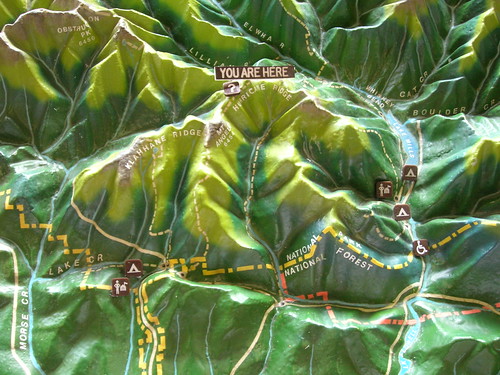
Our food, water and energy is derived from the planet we walk on. And thanks to technology, we're learning how to derive this energy more sustainably and efficiently. And one of the most unexpected results of the digital revolution is the redefined and empowered role of the geologist as sustainability guru.
The transformation of Earth science and geology is an answer to the world's growing needs. For example, the age-old cartographer's tool, the paper map, has always been a limiting factor in geologists' studies. The paper map has never been able to accurately display the data geologists collected. Further, it wasn't that long ago that ocean floors were too far away to be explored, let alone mapped. Now new technologies geologists have at their fingertips have increased their ability to perform an exact science.
3-D Mapping
Geologists have technologies for 3-D modeling at their disposal. Two dimensional mapping has often limited geology from being an exact science. Inferences had to be made with limiting technology. However, recent developments in 3-D modeling have improved mapping of natural resources, hence improving our ability to understand and assess the resources of the earth.
Groundwater modeling, carbon storage capacity, and conventional and geothermal energy surveys are benefiting from 3-D mapping capabilities as well. The natural progression to 3-D mapping was made possible by information science– the processing and analysis of data.
Seismography
Seismographic monitoring helps detect and measure earthquakes, and monitor the building and testing of nuclear weapons. Technological advances in digital seismography allows a much greater range of motion over a wide range of frequencies to be detected. Modern global seismology has also furthered the study of the Earth's interior, replacing old ideas about our planet's interior.
Marine Geology
Marine geology has benefited significantly from technological advances. The undersea world is just as diverse and interesting as our above-water world. Piloted submersibles, remotely operated vehicles (ROVs) and programmable acoustic instruments attached to ships make exploration of the undersea world possible. New technologies in 3-D modeling allows for creation of maps and models of the seafloor. Advances in marine geology can help provide for basic needs as our society grows.
Career Exploration
Job prospects for geologists are growing alongside these developments in environmental science. As our world is constantly looking for new ways to harness or generate power, geologists are growing more invaluable.
According to the Bureau of Labor Statistics, a geoscientist with a bachelor's level degree earns a median annual wage of $82,500. Geoscientists study physical aspects of the Earth. Most geoscientists spend time in the field, the office, and the lab. Field work can involve extensive travel to remote areas and irregular working hours. Job growth for geoscientists is projected to rise twice as fast as all other occupations. The DOL offers a thorough breakdown of employment and wages.
Geological engineers design mines so that minerals can be safely removed. They can expect to make the same amount of money as geoscientists, but job growth is average.
Hydrogeologists study how water moves through the soil and rock of the earth. Hydrogeologists ensure clean groundwater supplies. Job duties might include investigating ways to test water to guarantee safety, or overseeing cleanup of spills and contamination.
Architectural engineers work in activities ranging from food farming to processing, to developing biofuels to improving conservation. Architectural engineers may spend time in the office or on job sites. With a bachelor's degree, a median annual salary is just under $72,000. Job growth is expected to be a little slower than average in the next 8 years, but for environmental areas, growth should be larger than average.
SeaGrant offers information about geological oceanographers, a valuable career that's seen great strides in technology, improving our ability to derive food, potable water, energy resources, waste disposal, and transportation from the ocean. Marine geologists in academics with advanced degrees (taking between 6 and 8 years) can expect to make around $55,000 starting salary, around $80,000 working for the government, and upwards of $90,000 with as an associate professor with a Ph.D. Profiles of marine geologists dive into more detail about job responsibilities and career outlook.
Natural resource managers oversee and implement conservation and sustainability plans that relate to our Earth, often times related to human activities that help or harm her. Conservation scientists and environmental scientists with at least bachelor's degrees can expect a median pay near $60,000 with work in an office, lab or the field.
Geology may seem like a slow moving science to the millions of students who are stuck studying the same Cold War-era earth science textbooks their parents used. But don't let those moldy textbooks fool you. In reality, geology is developing as quickly as technology. And with society's constant demands for food, clean water, and energy, the pace will only quicken.